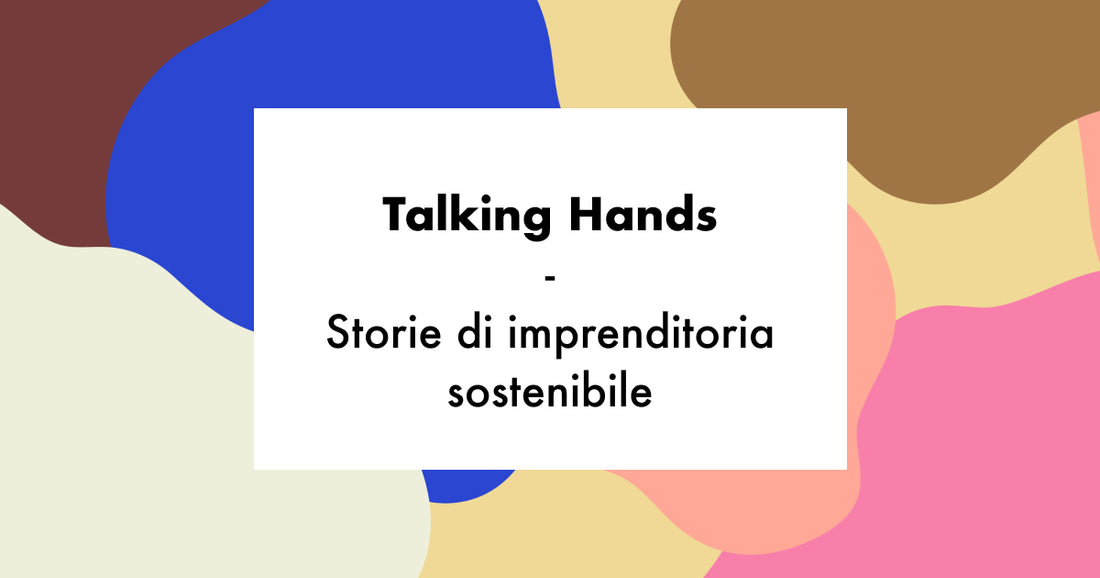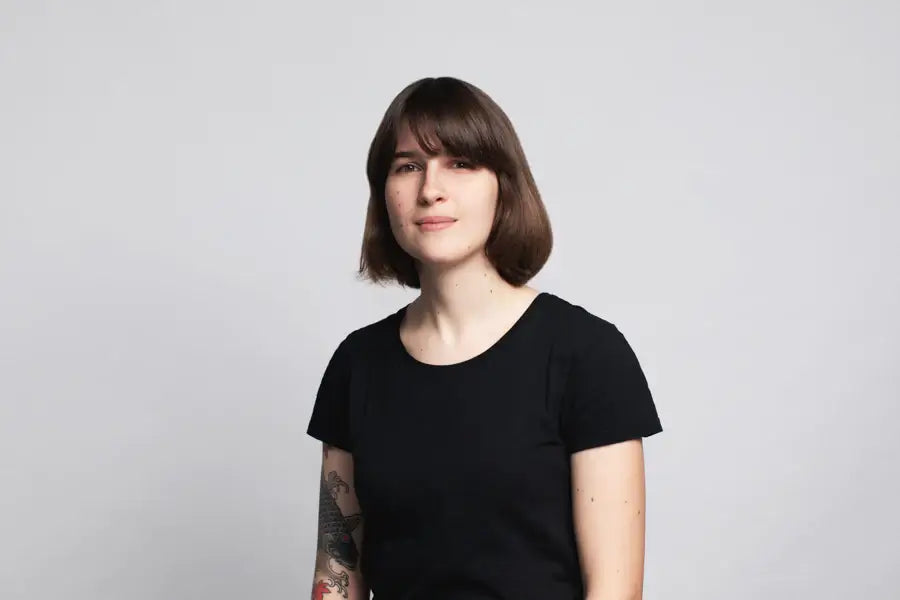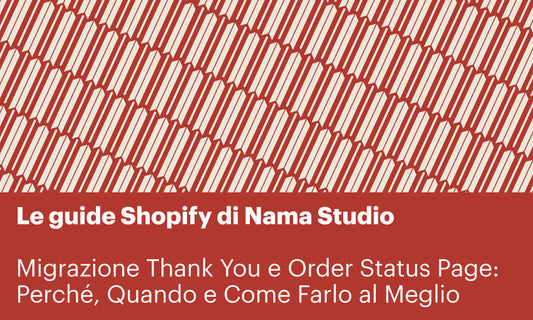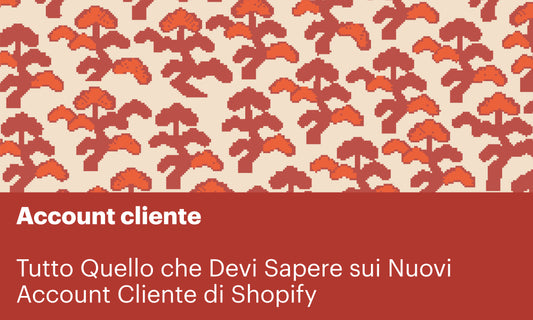Talking Hands is a not for profit permanent art studio enabling people from refugee communities to design, create and sell fashion and design products. We have discussed the story of this project, and the context surrounding it, with Fabrizio Urettini, founder of Talking Hands.
 Atelier | Ph. Francesco de Luca
Atelier | Ph. Francesco de Luca
NAMA:
Ciao Fabrizio, thanks for joining us for this conversation! Let’s start from the story of Talking Hands, a project that started from a squat and that has grown and changed through the years, though maintaining its horizontal and participatory approach. How did the project take off and how did it evolve over time? What are the key moments that shaped Talking Hands?
FABRIZIO:
Talking Hands was born during the humanitarian crisis in 2015-2016, when around 350.000 people, mainly from the Libyan coasts, crossed the Sicily Channel to enter Europe. Many of these people passed through Lampedusa and were assigned to different migrant reception centers across Italy. Treviso, differently from eastern Veneto and Friuli-Venezia Giulia, was only marginally touched by the migration flows from the Balcans, while in 2015-2016 a new population of around 2.000 people, mostly from western Africa and mainly aged between 18 and 26 years old, joined the city.
Nowadays the situation has changed completely, and the current border control policies applied by the EU have moved the humanitarian crisis towards other countries: in Bosnia and Croatia, where the populations coming from central Asia pass through in critical conditions, and even more in Greece, where whole islands, like Moria and Lesbo, have been transformed in open-air prisons similar to those in Nauru and Papua Nuova Guinea enforced by Australians. People detained in these structures are trapped into a limbo, hostages of the border and actually experiencing indefinite detention and being constantly excluded by the international protection system.
In more recent times the routes of the international human trafficking moved towards the Spanish coasts and the pressure on Melilla, Spanish enclave in Marocco, is growing, and recently 18 people died in the attempt of forcing the barriers. Numbers are now different, but the flow has never stopped. 16.626 people arrived in Italy in 2021, while every year around 2.000 people don’t make it to their destination and lose their life in the attempt to cross the Sicily Channel.
I think it is important to frame the context where Talking Hands was born, both from a local and European perspective. The political instability, the conflicts, the models of the International Monetary Fund, the extractive and predatory politics practiced on a large scale and the effects of the climate crisis are causing the relocation of whole populations across the globe. This happens especially from the South to the North, it is not a new phenomenon and it is definitely still in progress.
In Italy though, once again, this has been treated as an emergency, despite the fact that migration flows across the country have been going on at least from the Nineties.
Emergencies often legitimize inexcusable things, and this is how the Italian reception system quickly turned into a new and lucrative business model, based on big numbers which lead to big profits. Many state-owned areas, mainly ex-barracks, in Veneto and Friuli-Venezia Giulia, have been reopened and managed by shell companies with no experience in reception or immigration policies. These private companies, by applying a business model of clear neoliberal inspiration and based on the externalization of the minimum services (food, cleaning, supply of goods of first necessity) at a discount, manage to make profits for tens of millions of Euros acquiring the funds made available by the Ministry of Interiors through Prefectures. Prefectures got rid of a problem by externalizing to private companies the reception management. Inside the CAS - Centri di Accoglienza Straordinaria, there wasn’t any doctor, any trained psychologist or trained cultural mediator and any lawyer able to support the refugees in the long and complex bureaucratic process to make the asylum application, and there wasn’t any language or professional course.
The context where Talking Hands was born was that one of a new population of hundreds of incredibly young people trapped and regimented into ex-barracks - closed and impenetrable places by nature - and forced for very long periods of time to an imposed inactivity. Tens of boys and young men would come across our workshop: for them Talking Hands, inside the Centro Sociale Django, was a home and a shelter, and they owned the keys of the space from the very first moment, having free access to the atelier.
In that phase it became crucial to listen to the stories, the desires and the needs of this new population that was looking forward to prove themselves, in order to take back ownership of their life and future.
Design was fundamental to map all the people-oriented services and to identify other local entities that could help us in different areas (literacy teaching, legal and psychological support, access to the national health system, unions). The goal was to try and build an alternative reception model that was community based, grassrooted and able to create a bridge outward.
Once we managed to build such a community around the project and to respond promptly to the several daily emergencies we started thinking about what to do within the workshop itself, preferring circular governance structures. A first consultation made us realize that a wide range of artisanal knowledge was present: many of the people in the first group had some knowledge in sewing, woodworking, soldering, blacksmithing, embroidery. Some of these skills were acquired during their journey and helped to finance it.
The idea was to give value to the competencies already present within the people in the workshop, and in order to do so we involved some professionals, asking them to give us some of their time and start to create a collection of products together. Instead of coming up with a finished idea we asked them to work with us and try to co-design the pieces with the few means and materials we had available.
The first collection “Rifùgiati”, a series of micro-architectures for children, was developed together with the product designer Matteo Zorzenoni and to make it we have used some old wooden boxes that used to serve as ballot boxes and that were left, forgotten, in a town depot. I think this is interesting: the first collection was made out of ballot boxes turned into cases and then embellished with graphic patterns designed and painted by a young citizen that is not allowed to vote: Sheriffo Darboe.

Desire Week - Macao (Milano) | Ph. Francesco de Luca
Talking Hands is now very different, because most of the hundreds of young men that frequented the space in those years now own a residence permit, work in order, financially support their family in their country of origin and are building a new life in Italy. This is the crucial data that already by itself challenges and proves wrong the toxic and racist narratives that have been built in Italy in these years. Logistics, agriculture, workshops, factories and the construction industry have completely absorbed this community of new Italian and European citizens.
Others between the people we met at Talking Hands decided to carry their professionalization path further, and some stayed by our side. What we still carry with us from that period is the love for experimentation, and the process of shaping projects starting from tumultuous events instead of linear planning.
The atelier door is still open and there are many volunteers, interns and professionals that ask to collaborate with us. We have recently had Maxime, fashion design student at the prestigious HEAD school in Geneva, as an intern, and we have recently completed an artistic project in collaboration with the conceptual photographer Giulia Iacolutti.
We try to use design to give answers to concrete needs and we try to do so with an organic approach, in the physical space of the atelier where the different lives, stories, sensitivities and approaches can express themselves. Through the community work model we manage to open a window towards an imagination which is “other” and plural.

NAMA:
Talking Hands products are designed and planned with the goal of creating space for “other” and plural images, richer than the usual eurocentric ones. What is the creative process that leads to your products? Who are the people that contribute to their creation? Is there any product with a particular story you’d like to share?
FABRIZIO:
At the workshop we’ve always been convinced of the importance of opening up to a plurality of ideas and stories, and to do so we needed to get rid of a certain self-referential attitude in handling projects. It is such a wide discourse, investing all different aspects of human life, and it requires a deep intellectual transformation.
We think it is fundamental to start considering the totality of the populations that inhabit this planet when building a new cultural landscape. When we look at “the other” it is really important to avoid doing it with the tourist’s curiosity, or, even worse, with the lenses of “the exotic”: “the others” are nothing less than the mirror or what we are ourselves.
They are one of the faces of our human experience, and the different experiences help us answer questions that belong to us as well as to “the other”. We need to start embracing the fact that human identity isn’t a static thing, but it is instead made by a wide network which changes and interacts from within from the very first moment human history started.
In the design field there isn’t much literature that covers the decolonisation of projects, and for this reason we have decided to look at the postcolonial studies for some guidelines. Frantz Fanon, Edward Said, Aimé Cesaire, Kwame Nkrumah, and especially Edouard Glissant, father of the “créolité” theory. Postcolonial authors have been the first, after the fall of European colonialism, to stress the need to go beyond an eurocentric model and start thinking about identity in a new way.
Glissant, who started his studies in the Antilles and that focused on the creolisation phenomena, states that creolisation requires that the different cultural elements set side by side have equivalent value to make the magic happen. If any of these elements are diminished in comparison to others, creolisation simply doesn’t happen. Heterogeneous elements need to value each other and mix with each other: there is no space for degradation or depreciation, either from the inside or the outside. This is the type of magic we’ve been working on in the last five years at Talking Hands.
 Con le mani imparo l'italiano | Ph. Fabrizio Urettini
Con le mani imparo l'italiano | Ph. Fabrizio Urettini
NAMA:
Talking Hands pays a lot of attention to its partners and collaborators, starting from the materials used for its products. How do you choose the fabrics and the producers involved in your projects? You often receive physical gifts (i.e. some denim or other textiles, etc.): how do such encounters with new materials impact on your products creation?
FABRIZIO:
The person in charge of the fashion atelier is Samuel Agyemang, originally from Takoradi, with previous experience as a tailor in his country of origin, where he used to create the costumes for his dance crew and for the famous Ghana Carnival Parade.
Many are the designers, students, activists and Italian and international photographers involved in the project. People - both migrants and volunteers - contribute for a finished period of time, making way for other people that will come and collaborate in different ways, based on needs, time, experience and project goals.
Every project created by Talking Hands is the result of a small production chain that involves people with a different range of skills and experience, and that supports the development and improvement of the competencies in the different fields involved. The process of creating value is assigned to the individuals, to the creative community and to a social community of people around the workshop.
Each step of the creative and productive process revolves around the participative nature of the project.
The fabrics selection is the first discussion moment of the different players involved in developing the collections. The Lanificio Paoletti di Follina (TV) joined the project making their textiles available for the collections. More specifically they are giving us the so-called “fazzoletti” - production tests where variations of weave and weft are experimented, production surplus, sampling and unsold stock difficult to sell. Using deadstock materials is strictly connected to our goal of being sustainable.
Initially we make a first selection of the textiles to use for different pieces. The final choice, connected to colors, textures and textile drawings, is made by the tailors themselves. The fabrics are then combined through quilting, a process that balances static and dynamic elements. Quilting has antique origins: combining different pieces of cloth to make a bigger one is a worldwide spread practice, a recycling technique part of the domestic economy. During slavery, especially in the south of the United States (i.e. in Alabama) where the life conditions in the plantations were terrible, quilted assumed unseen forms. The African American Quilt represents an act of cultural resistance, and its craftsmanship and artistic and expressive value have fully entered the North American cultural landscape.
The textiles coming from the Lanificio Paoletti are paired with Wax printed cottons, that we buy directly from and African company thanks to a collaboration with the French anthropologist and African fabrics expert Anne Grosfilley, author of “Wax and co. | Anthologie des tissus imprimés d'Afrique”. Anne created a direct connection between Talking Hands and the Ivorian UNIWAX - company of the Vlisco group that since 1968 is the leader of "véritable pagne wax" in Western Africa. As you can see already our different fabrics show the encounter between different cultures, ideas, sensitivities and visions.

T-Save | Ph. Veronika Gorianska
The design process of the pieces, accessories and furniture accessories, show similar collaborative dynamics: each of the people involved is free to propose and develop their own ideas, that are subsequently assessed by the group. The pattern-making takes place thanks to the guidance of professionals volunteers, who have been teaching us rules and techniques. The tailors are free to explore and work on new ideas experimenting directly with the materials, by hand or using the sewing machine, without defining the paper pattern beforehand and instead obtaining it later on. Two different creative processes intertwine and help the project grow.
The video and photo shoots are made involving the same people that have designed and created the pieces, asking them to participate in creating a "mise en scene" inside the atelier or also in other contexts.
Often the images portray many people: many of them are young activists, second generation young women that become actresses and directors themselves during the shooting: they hold hands, dance, stress the collaborative soul of the project and actively participate through their social channels in the brand promotion, becoming testimonials themselves.
Also the sales process involves the different people involved in the project, through the participation at independent design markets, temporary exhibitions, fairs and much more. In this way we can have a direct relationship with our clients and better understand his impressions and feelings, the project goes out from the space of the workshop and extends into the community.
Talking Hands transforms into a place to share values, ideas, knowledge: each of us brings their own experience and makes it available to others, while working together for a common goal. In this way each participant of Talking Hands leaves their traces also after leaving and making way for others.
NAMA:
Your website hosts a wonderful “We Are” page, that shows the faces of each person that wrote a piece of the story of Talking Hands. Could you tell us something more about the people that are part of the project? How does the project interact with the city of Treviso, where it is located?
FABRIZIO:
We cannot tell the story of Talking Hands without talking about Bankù.
Bankù is a nickname given by his journey mates and that in the mandinka language means “to eat”.
Bankù has been part of the community surrounding Talking Hands since day zero. He has always preferred mechanics and repairing broken objects to the workshop activities, and he’s been spending his days trying to find old mechanical instruments, electronic appliances, old hi-fi, bicycles and various items up to scooters and mopeds. This habit has caused some tensions because in a very short period of time Bankù ended up filling up all the available space with bags and buckets full of objects and pieces of clothing that Bankù hoped to ship back to Gambia, his country of origin. Periodically we had to clear the space from the dozens of suitcases that Bankù was guarding, often left by some of his journey companions that left light towards other destinations and never came back.
When he arrived in Italy, Bankù, like many other young men coming from the rural areas of Western Africa, was functional illiterate. Having lost his parents at the age of 9 he managed to survive thanks to his special skill of horientating himself in each type of contest - what the French call “l’Art de la Débrouille”. This allowed him to grow up and manage to cross the Niger desert, reach Libya and then sail to Italy, which became his adoptive country for all intents and purposes.
Bankù, through his modern hunter-gatherer practices, was able to quickly provide for his own needs and for those of the community thanks to his knowledge of where to find anything for the best price: he would always come back to the atelier with a big bag of rice on his shoulders, and then onions, chicken and several tins. He would spend the rest of his time to support the social life of the atelier: he’s always been helping the group work, and he was an inspiring presence, able to lift the mood and bring optimism and at the same time mediate between the conflicts that sometimes would start within the group, and that would mostly end with Bankù’s jokes.
Within the squat, where he is loved and respected by everyone, at some point he started a small vegetable garden as well as a roost, where firstly 4, and then 5, and then 6 hens would scratch about and obey him.
Bankù is extremely clever, able to move within an informal economy and never surpassing the subtle and invisible line between legality and illegality. He has a strong sense of community, his social network allows him to survive. As a metaphor we could think of a spider web whose strength, resistance and resilience make it an essential tool to gather food.
Nowadays Bankù is the owner of a residency permit, has successfully attended many literacy and conversation courses with volunteering teachers and he is now registered in a CPT - Provincial Center for Adults Education where he is obtaining his first language certificates. He is working in a greenhouse cultivating mushrooms with a regular contract and he is living inside an experimental social co-housing structure together with 6 of his companions where he has started a new vegetable garden.
 Rifùgiati | Ph. Michele Amaglio
Rifùgiati | Ph. Michele Amaglio
NAMA:
Talking Hands aims at training new designers. You are an art director yourself. How, in your opinion, can design support social change?
FABRIZIO:
I think it is misleading to think that design can start processes of social change - this has been a big mistake in the past and it produced disastrous consequences. Design can be an incredible tool to answer new needs arising from social processes and transformations. Edouard Glissant, speaking of creolisation processes - a word I prefer using since it refers to a linguistic and cultural process instead of using other words that still somehow refer to a biological heredity - says that nowadays it is impossible to write without acknowledging the existence of all the languages in the world, and I think this same thought can be applied to design, fashion, architecture and all project-based disciplines.
 New Spring Summer | Ph. Veronika Gorianska
New Spring Summer | Ph. Veronika Gorianska
NAMA:
How can our readers support Talking Hands or learn more about the project?
FABRIZIO:
Write to us, come visit us, check out our website: our door is always open.




